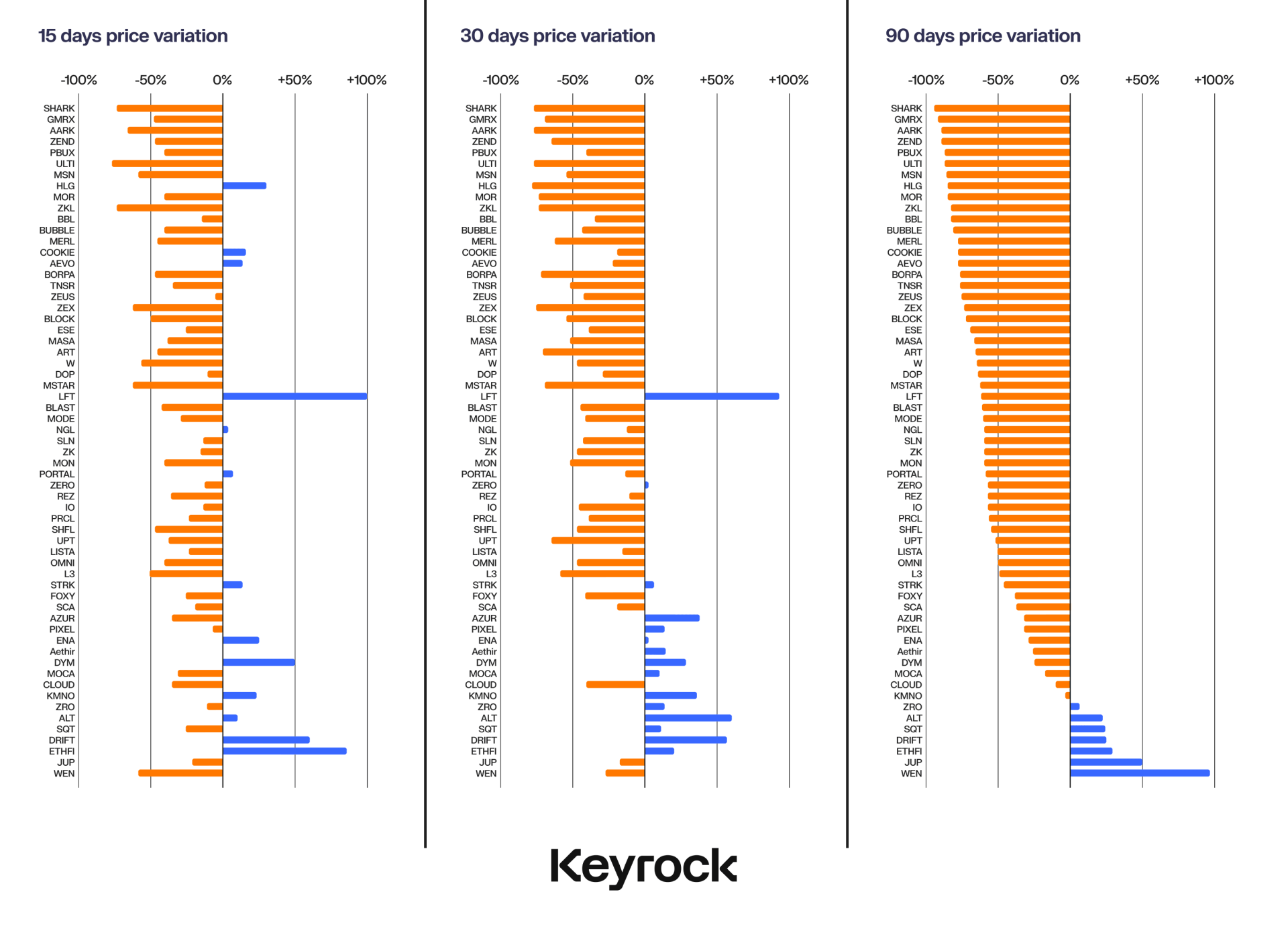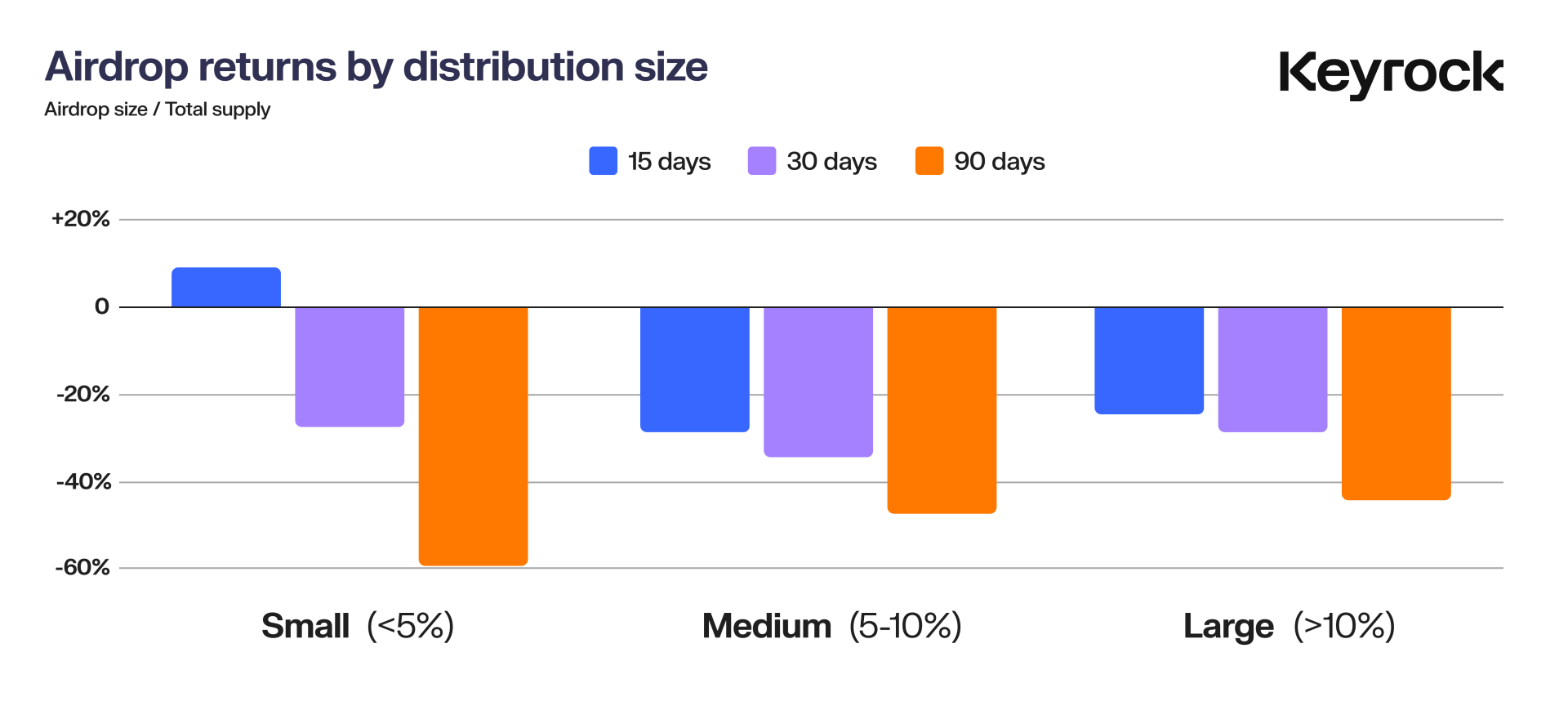Crypto airdrops, a strategy prevalent since 2017 for distributing tokens and stirring early enthusiasm, are increasingly facing challenges. Despite initial excitement, a recent study by KeyRock Trading highlights that there is a downturn in token performance shortly after listing.
Moreover, many airdrop tokens fail to sustain long-term interest or value.
SponsoredAirdrop Token Performance Analyzed
The study, which analyzed 62 airdrops across six blockchain networks throughout 2024, paints a stark picture of the effectiveness of these campaigns. Notably, after 90 days, 88.7% of the tokens analyzed showed a decline in price, with only a handful showing resilience.
Read more: Earning Passive Income with Forks and Airdrops in 2024
In the crypto ecosystem, airdrops are a way to boost protocol engagement and widen token distribution. However, the oversaturation of such strategies seems to have diluted their impact, leading to decreased community retention and sometimes even protocol abandonment.
“Looking at price action over 15, 30, and 90 days, it becomes evident that the majority of price movement occurs in the earliest days following the airdrop. After three months, few tokens manage to return a positive result, with only a handful bucking this trend,” Keyrock said.

Interestingly, while the overall performance of airdrops paints a bleak picture, not all results were uniformly disappointing. The data revealed that outcomes varied significantly between different blockchains.
SponsoredFor instance, Ethereum and Solana stood out, with 14.8% and 25% of their respective airdrops maintaining or increasing in value after three months. Conversely, other networks like BNB, Starknet, Arbitrum, Merlin, Blast, Mode, and ZkSync saw no airdrops with positive outcomes.
The disparity in performance among chains highlights the influence of network preference and user base characteristics. Solana, gaining popularity as a retail favorite and a serious contender to Ethereum’s dominance, showed relatively better outcomes, possibly due to its growing and engaged community.
Large Airdrops Tend to Do Well
Moreover, KeyRock’s report also delved into the role of token distribution strategies. It categorized airdrops based on the percentage of total token supply distributed – small (less than 5%), medium (greater than 5% but less than or equal to 10%), and large (more than 10%). The findings suggest that the size of an airdrop can significantly influence both initial market reaction and long-term viability.
Read more: Best Upcoming Airdrops in 2024

In the short run, smaller airdrops tended to perform better, possibly due to reduced immediate sell pressure. However, these gains were often short-lived, with significant price drops occurring within three months. This suggests that while initial scarcity can curb immediate sell-offs, it might also lead to delayed market corrections as conditions change or insiders decide to cash out.
Furthermore, medium-sized airdrops struck a balance, showing slightly better retention and performance. However, it was the larger airdrops that truly excelled over longer periods. These extensive distributions appeared to foster a stronger sense of community ownership, which could be instrumental in stabilizing price fluctuations and sustaining user interest.
“Ultimately, this data suggests that being less stingy with token distributions pays off. Protocols that are generous with their airdrops tend to cultivate a more invested user base, leading to better outcomes over time,” Keyrock concluded.

